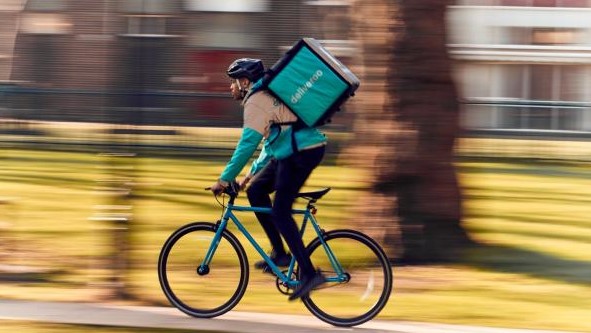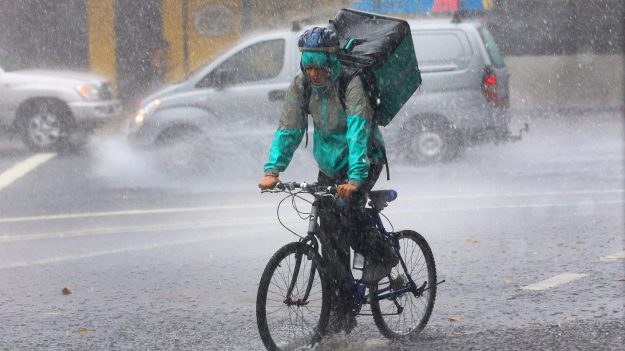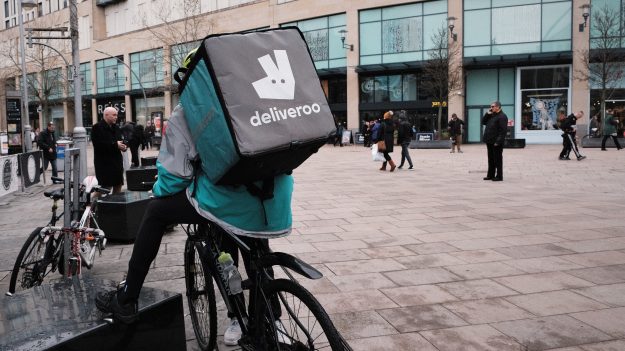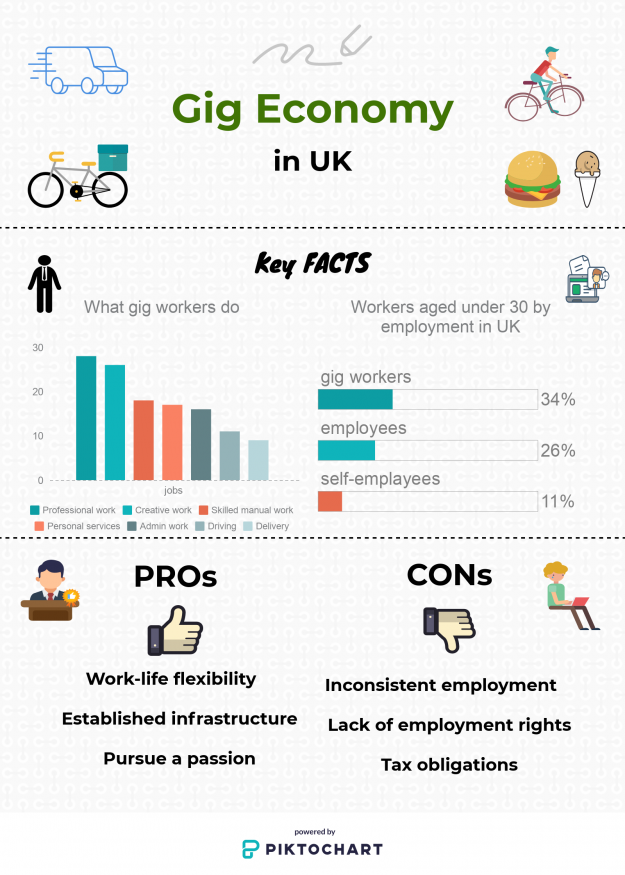An increasing number of people choose to work as delivery riders with the growth of gig economy. What’s the job really like?

Delivery people never feel tired. No matter what they ride, they’re on the street every day at all hours, instantly recognisable by their green boxes and distinctive uniforms. No matter how bad the weather is, they struggle to get people their food hot and fresh.
David has been as a full-time delivery rider for two years. “I work for 8 or 9 hours a day. Basically, we go into town, normally by KFC on Queen Street, log in as soon as we get an order on our phone, and pick up the food, then we take it to the customer.”
Exploring every corner of a city and meeting different people: sounds interesting and challenging, doesn’t it?
With jobs for life becoming rarer and rarer, workers are looking for ways to secure their future while enjoying their work at the same time.
“Giggers” (workers in gig economy) usually work for app-based digital platforms which provide consumers with “on demand” services, allowing them to get food delivered from practically any restaurant. These apps, like Deliveroo and Uber eats allow people to order food from a wide-variety of restaurants now absolutely dominate the market and have allowed thousands of people to create their own schedules.

“I’d even go as far as to say, it’s probably one of the best jobs I’ve ever had. It’s quite flexible, you can cancel your order and go wherever you want to go. And I can make a living on it. You know, we can meet some interesting people and see some interesting things.”
Delivery riders can also face a significant amount of risk. David shares one of his painful experiences. “I’ve got attacked by twenty youths in September last year. They tried to steal the food in my bag, and my bike, my phone. I got punched in the head about nine times.”
Sometimes they experience unfair treatment by the restaurant staff who provide the food. “You know, sometimes we got treated as if we’re not even human beings. We got told we’re not allowed inside, we get told you have to wait outside in the rain or we have to go around the back.”
There are two payment styles; hourly or per-job. The hourly rate is £7, while the pay per individual delivery is £3.75. Overall, pay-per-job pays better, but delivery workers aren’t always given an option about which contract they take.
The job can be hard. Sometimes customers only provide a street name; no house number, just a postcode in the street name, which is hard for riders to find. And that happens quite a lot.

Having trouble finding an address can negatively impact tips, which already are a luxury. “I’ll be lucky to get a pound a week and I’ve not had a tip now for three and half weeks since most of our customers are students.”
Another complaint of riders is little oversight from the delivery company. “The only way to contact in Deliveroo is email. They’re not very good at the point. You’ve got an email and chase up and it’s kind of annoying because it feels like they’re ignoring you.”
John Blackwell, another rider for Deliveroo, also says that communication is the main problem. “It’s all run by emails, I know a lot of riders get frustrated because you send an email out, there’s a delay for that get in there and then there’s a delay with an email coming back, I think there are a lot of problems within that.”
“It’s so much hassle just tried to contact someone to get an answer, or to get equipment, or to chase up wages you know, it’s a lot of effort at first how do you get this treatment. I think if they had like a small set office in town, it would be great,” says David.
When deliverers are first hired, they pay a deposit on equipment. In theory, this should be returned at the end of their employment. However, David says, “When you quit, if you’re a long-term like myself, when you tried to get your deposit money back, you won’t get an answer.
“Like my friend, he’s recently just quit. He was emailing them for two and a half months asking for his deposit back. When he could return escape, and he never got an answer. In the end, he sold his account to another friend who actually got fired by Deliveroo, for some nonsense.”
David pauses for a while and says, “I am going to be looking for another job like in a cafeteria. Obviously, I’m getting too old for this now and have a heart problem. I can’t push it too much. If I do carry on go on then you know the doctor of a valve transplant sooner than what I want to if that makes sense.”
Delivery people do feel tired.
Infographic:

